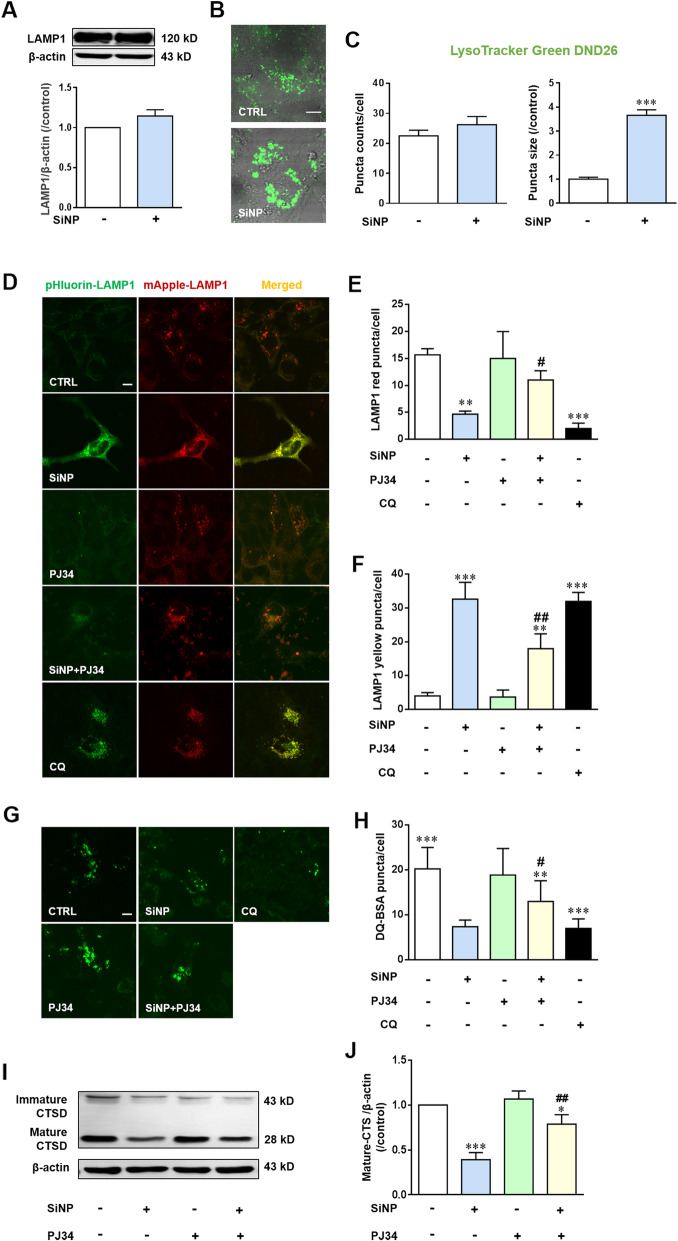Fig. 5.
PARP activation mediates SiNPs-induced lysosomal alkalization and reduced degradation capacity in BEAS-2B cells. a LAMP1 expression determined by western blotting. b Representative images showing LysoTracker Green DND-26 fluorescence in cells under control conditions or after treated with SiNPs (100 μg/mL) for 24 h. c The mean number and size of lysosomes in cells as shown in b, from 50 cells for each condition. Scale bar = 10 μm. d Representative confocal microscopic images showing mApple-LAMP1-pHluorin in cells under control (CTRL) condition or after treatment with SiNPs (100 μg/mL) for 24 h in the absence or presence of PJ34 (10 μM). Cells were incubated with CQ (50 μM) for 3 h as the positive control. Scale bar = 10 μm. e-f Mean number of puncta in each cell under the conditions shown in d, from 30 cells for each condition. g Representative confocal microscopic images showing DQ-BSA analysis of lysosomal proteolytic activity in cells under control condition or after treatment with SiNPs (100 μg/mL) for 24 h in the absence or presence of PJ34 (10 μM). Scale bar = 10 μm. h Mean number of puncta in each cell under indicated conditions shown in g, from 30 cells for each condition. i-j Western blotting analysis of CTSD in BEAS-2B cells under control condition or treatment with SiNPs (100 μg/mL) in the absence or presence of PJ34 (10 μM), from three independent experiments. *P < 0.05, **P < 0.01, ***P < 0.001 compared to the control cells, and #P < 0.05, ##P < 0.01 compared to cells treated with SiNPs alone

